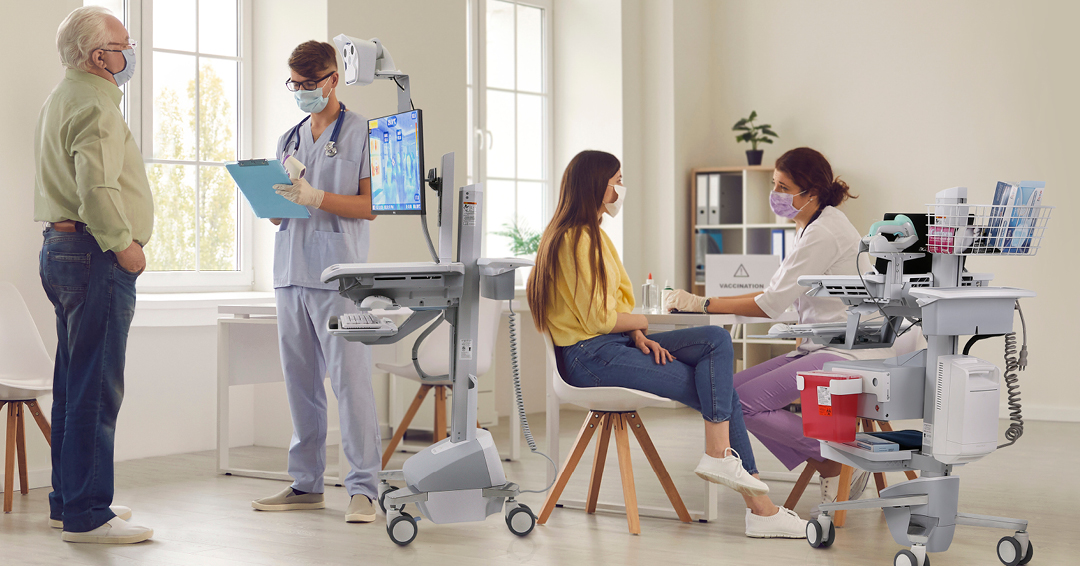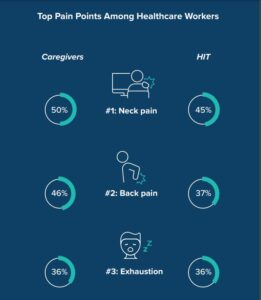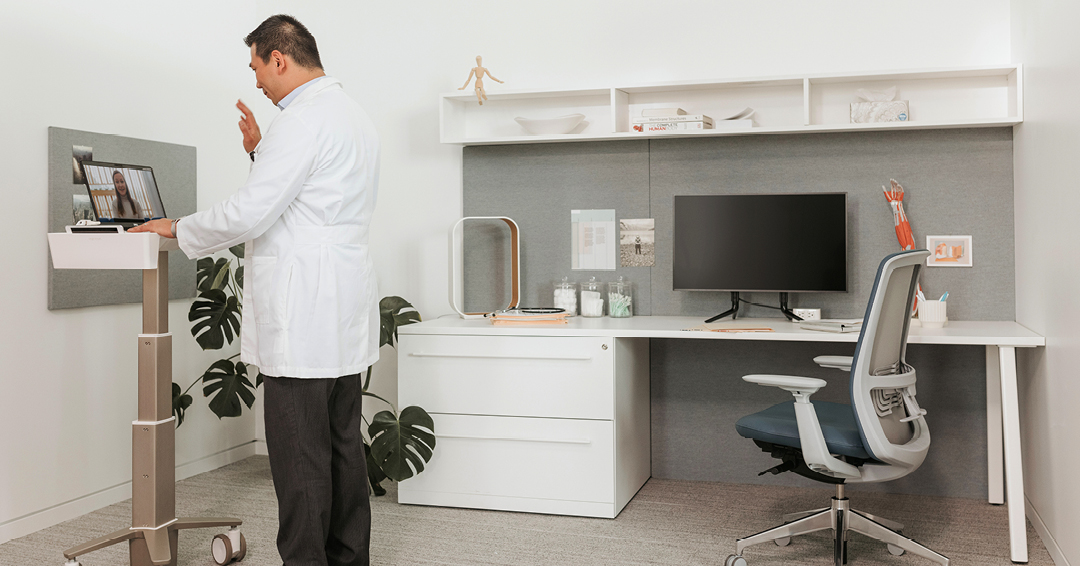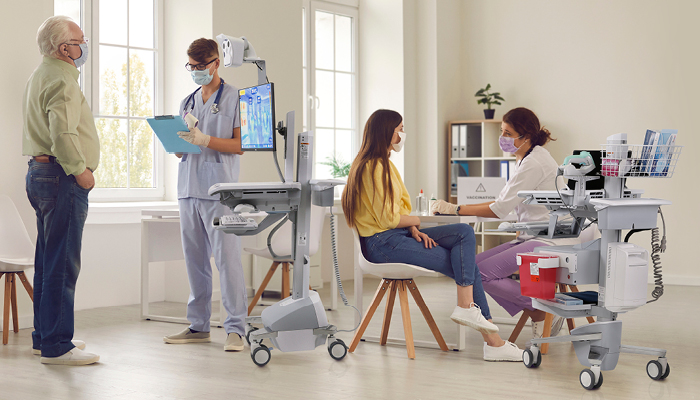The COVID-19 pandemic is not over for caregivers and healthcare IT (HIT) staff still dealing with longer shifts and increased patient loads. The majority are experiencing health issues related to ongoing stress, poor workplace ergonomics and other factors.
To better understand the impact of the pandemic on healthcare employees, Ergotron worked with independent technology market research specialist Vanson Bourne to survey 500 workers across the U.S. When asked about their perception of their businesses’ COVID-19 response and their outlook on the work landscape going forward, three themes emerged.
The burden placed on our healthcare workers during the pandemic cannot be understated, and finding ways for those employees to do their work safely and efficiently will be critical to retaining talent and providing effective patient care. – Chad Severson, Ergotron CEO
Mental and Physical Health Impacts
 The mental and physical toll on healthcare and HIT professionals is significant with 94% of healthcare employees reporting a negative impact on their physical and/or mental well-being during the pandemic. Healthcare leaders must prioritize their staff to help reduce the risk of turnover and burnout.
The mental and physical toll on healthcare and HIT professionals is significant with 94% of healthcare employees reporting a negative impact on their physical and/or mental well-being during the pandemic. Healthcare leaders must prioritize their staff to help reduce the risk of turnover and burnout.
- Clinicians and HIT workers don’t look forward to their workday. Less than a quarter of healthcare workers (22%) are excited to go to work, and this number drops to just 15% for caregivers.
- Healthcare employees encounter high rates of workplace-related injury and worsening mental health. 42% of respondents report feeling physically exhausted and a quarter (25%) have more physical pain. Additionally, healthcare workers reported being more anxious (39%), burnt-out (36%) and depressed (29%).
A Renewed Focus on Ergonomic Tools
 Caregiving has always been physically and mentally demanding, and those demands have only grown. Incidence rates were up in 2020, and some staff reported that they didn’t have access to the right tools to combat stress and burnout. Nearly all reported that updated ergonomic equipment could increase their happiness at work.
Caregiving has always been physically and mentally demanding, and those demands have only grown. Incidence rates were up in 2020, and some staff reported that they didn’t have access to the right tools to combat stress and burnout. Nearly all reported that updated ergonomic equipment could increase their happiness at work.
- Lack of access to ergonomic tools contributed to workplace injuries and health problems. 43% of caregivers and 70% of HIT staff reported experiencing work-related injuries or health problems related to repetitive stress or poor workplace ergonomics.
- To improve clinical and non-clinical staff’s workplace well-being, consider updating workstations. The majority of respondents (95%) stated that having better, more ergonomic and mobile equipment could improve their health and well-being.
Adapting to Telehealth Workflows
 Telehealth use that spiked during the pandemic is now the new normal. While telehealth adoption has many benefits, caregivers are now encountering some of the sedentary health challenges usually faced by traditional office workers. Leaders should support this new way of working by providing equipment that helps keep teams comfortable and active.
Telehealth use that spiked during the pandemic is now the new normal. While telehealth adoption has many benefits, caregivers are now encountering some of the sedentary health challenges usually faced by traditional office workers. Leaders should support this new way of working by providing equipment that helps keep teams comfortable and active.
- Telehealth plays a more significant role in most respondents’ work. 44% feel that they can provide better care for their patients through the increased use of technology.
- Telehealth has helped clinicians feel safer and more productive but has also led to a more sedentary workday. 87% of caregiver respondents report that they are concerned about the physical impacts of using telehealth technology more frequently.
Build a Vibrant Workforce
Supporting caregivers and HIT workers so they feel healthy, safe and happy is critical to retention and quality patient care. Read the full survey results for further insights that will help you address real needs among your staff to build a vibrant workforce.



